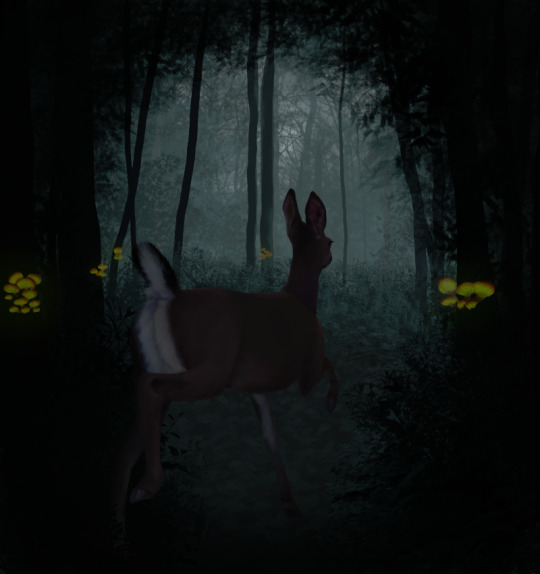#this one is special to me because this subspecies of mule deer is exactly the same
Explore tagged Tumblr posts
Text

Deercember Day Twenty-Seven: Columbian Black-tailed Deer | Will-o'-wisp
The Columbian black-tailed deer or blacktail (Odocoileus hemionus columbianus) is found in western North America, from Northern California into the Pacific Northwest of the United States and coastal British Columbia in Canada. East of the Cascade and Sierra Nevada Ranges in Oregon and California, black-tailed deer are replaced by other mule deer which have a different tail pattern. They have sometimes been treated as a species, but virtually all recent authorities maintain they are subspecies of the mule deer (Odocoileus hemionus). Strictly speaking, the black-tailed deer group consists of two subspecies, as it also includes Odocoileus hemionus sitkensis (the Sitka deer). Despite this, the mtDNA of the white-tailed deer and mule deer are similar, but differ from that of the black-tailed deer. This may be the result of introgression, although hybrids between the mule deer and white-tailed deer are rare in the wild (apparently more common in West Texas), and the hybrid survival rate is low even in captivity. These two subspecies thrive on the edge of the forest, as the dark forest lacks the underbrush and grasslands the deer prefer as food, and completely open areas lack the hiding spots and cover they prefer for harsh weather. One of the plants that black-tailed deer browse is western poison oak, despite its irritant content. During the winter and early spring, they feed on Douglas fir, western red cedar, red huckleberry, salal, deer fern, and lichens growing on trees. Late spring to fall, they consume grasses, blackberries, apples, fireweed, pearly everlasting, forbs, salmonberry, salal, and maple. More information here.
References: Deer, Background, Mushrooms 1, Mushrooms 2.
#this went better than I ever could have hoped or expected and may be my new favourite#this one is special to me because this subspecies of mule deer is exactly the same#as lives on the property where Stan and I will be building our home#and is one of only a handful of deer who I've had the honour of seeing in person#the mushroom species is the western jack-o'-lantern mushroom (Omphalotus olivascens) native to California and Mexico#shoutout to my bestie Wind for the amazing suggestion for a natural will-o'-wisp#I am‚ quite frankly‚ blown away with myself today#Deercember#realHum#Art#Drawing#deer#deer art#Columbian black-tailed deer#Columbian blacktail deer#Columbian blacktail#black-tailed deer#blacktail deer#blacktail#Odocoileus hemionus columbianus
5 notes
·
View notes